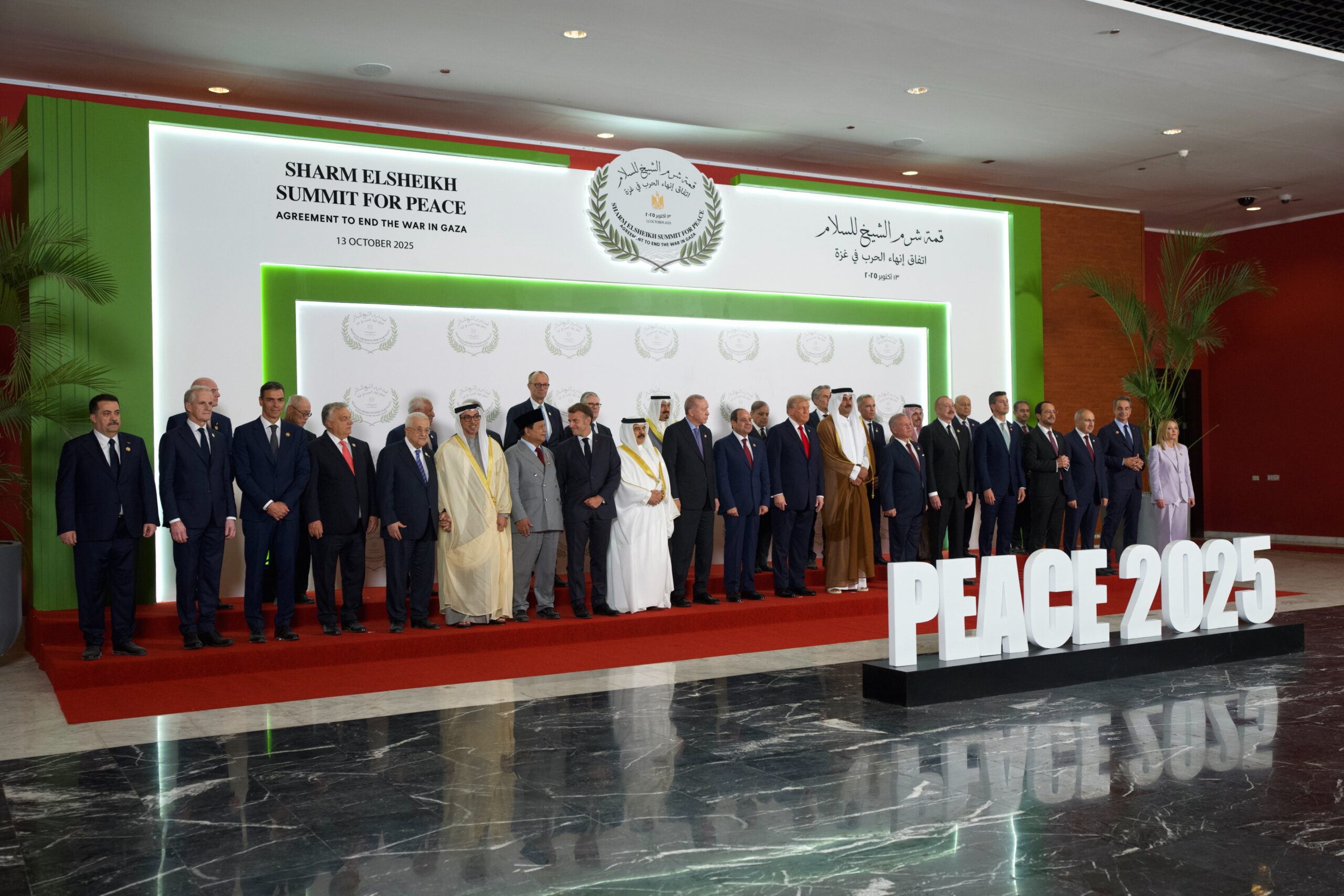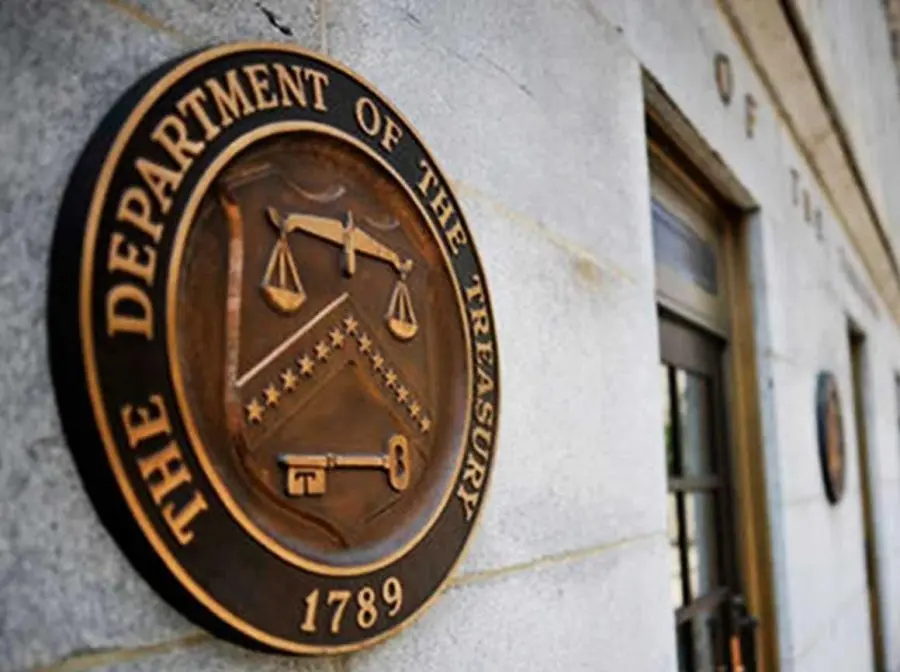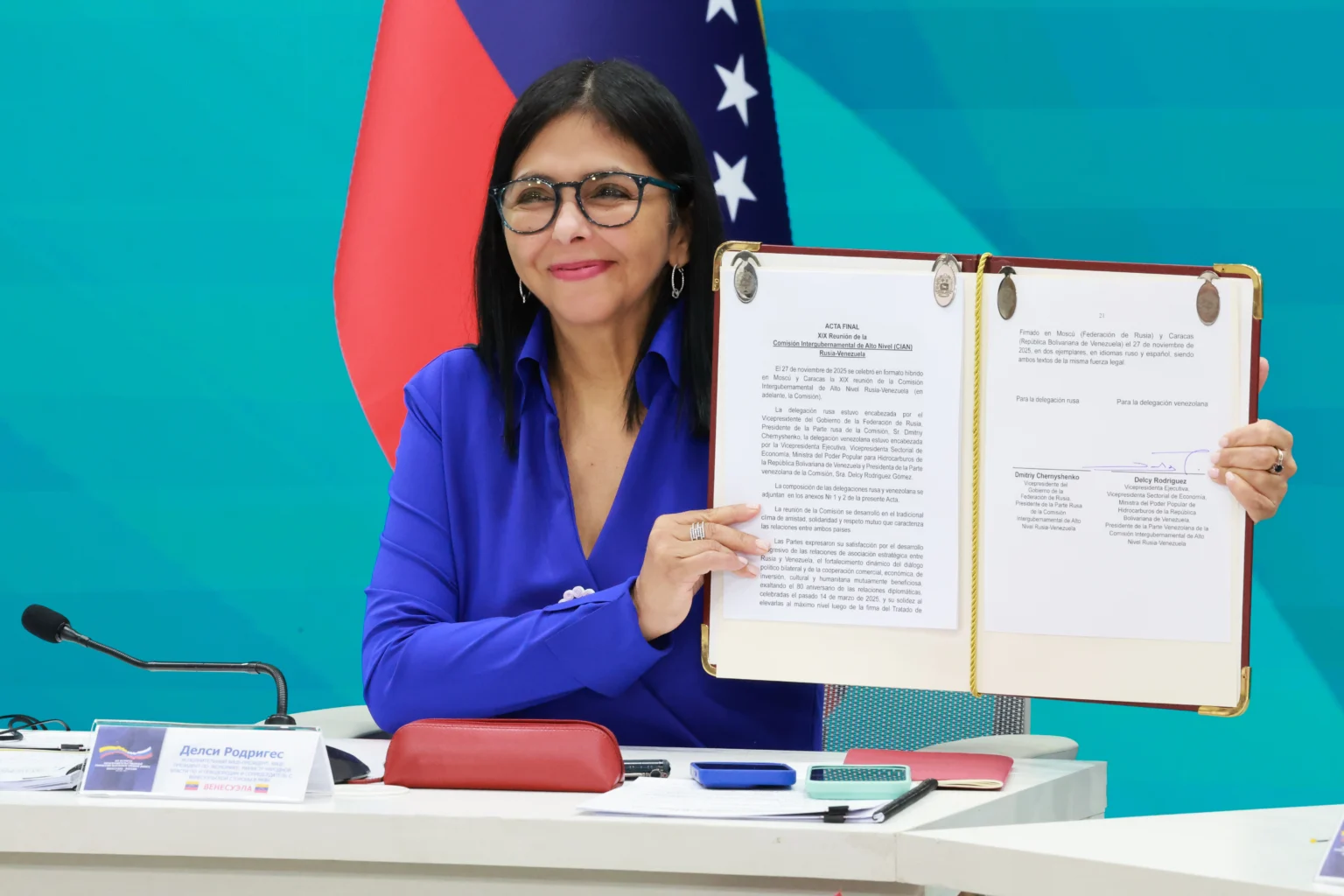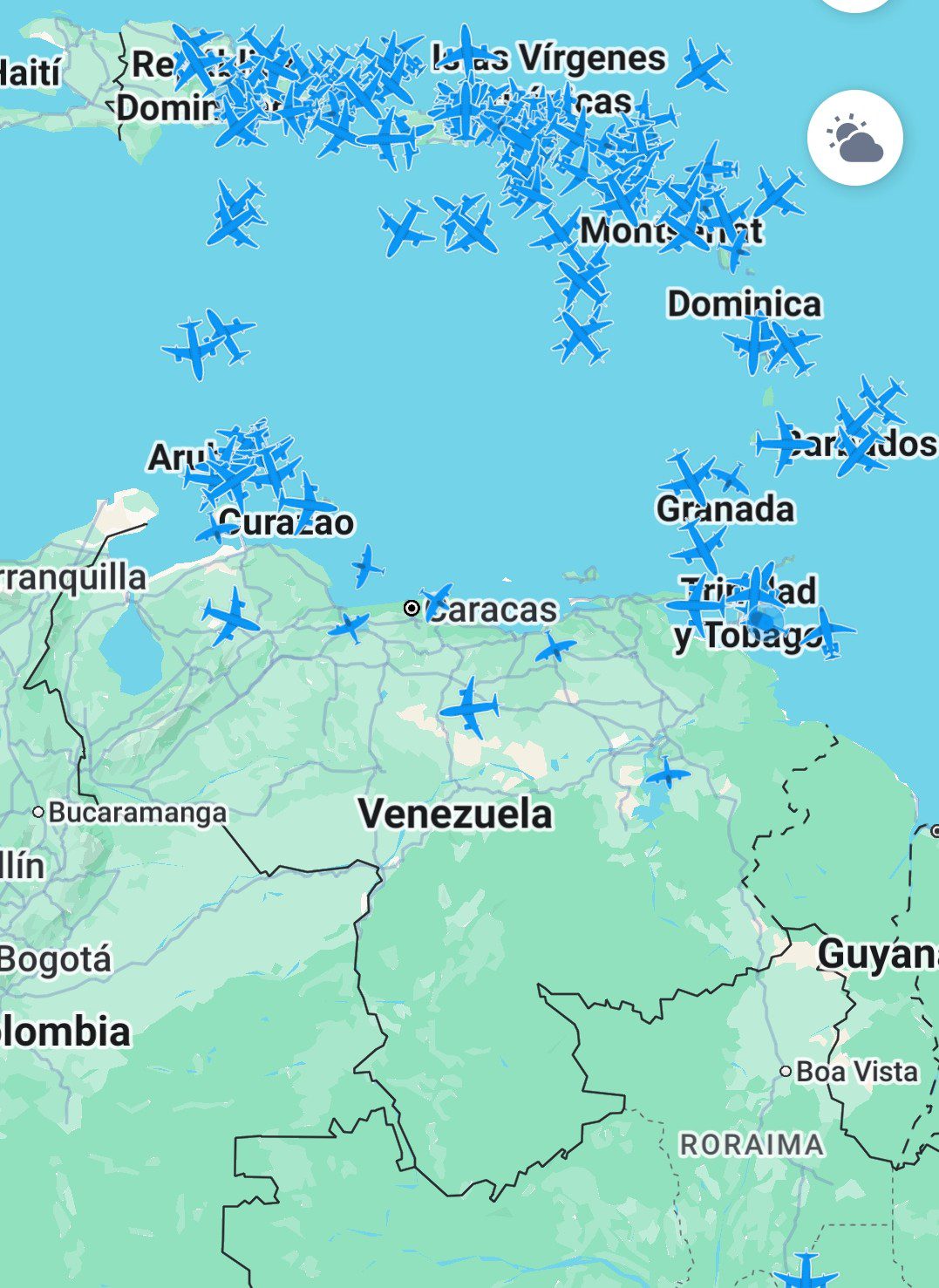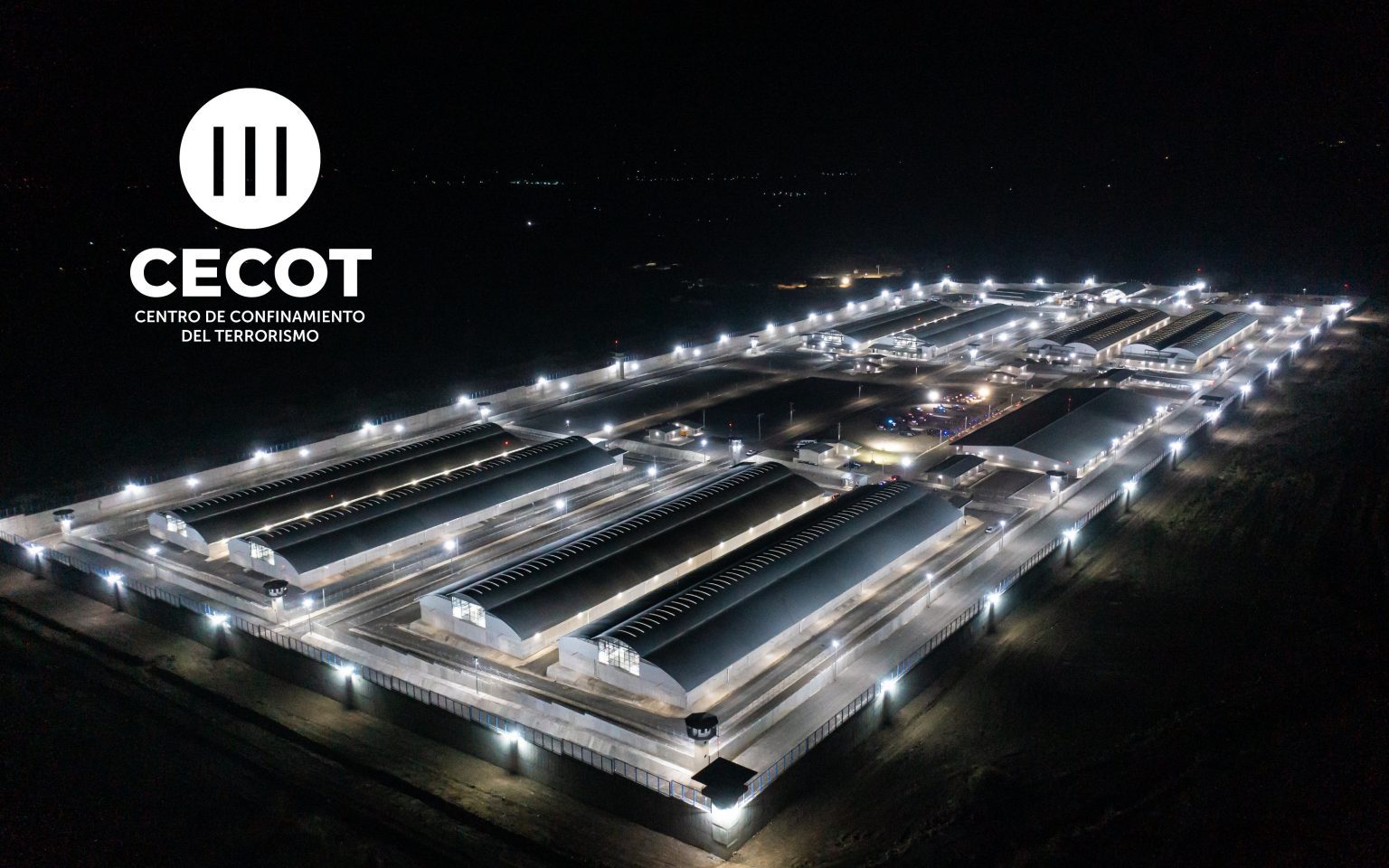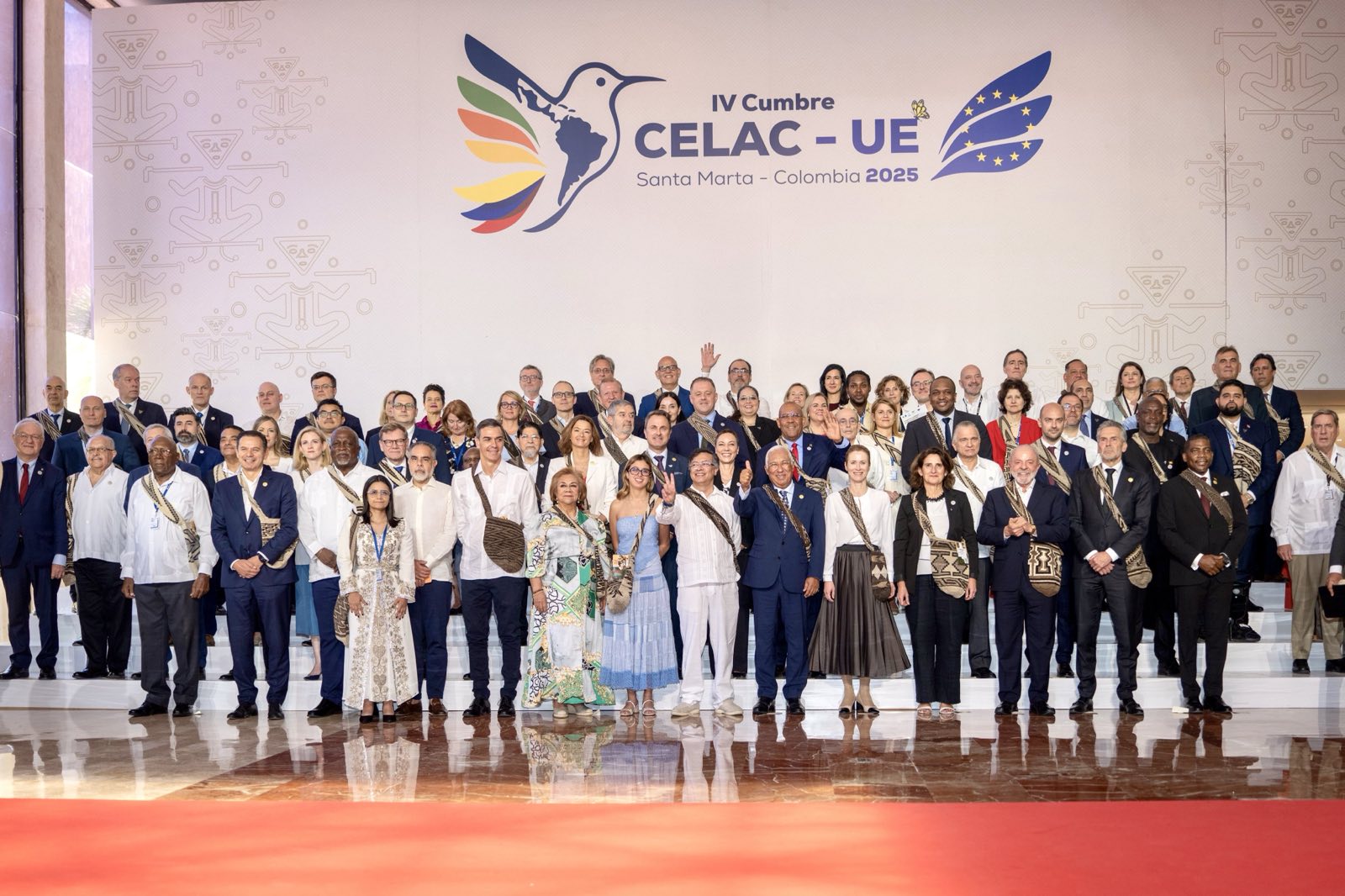Leaders of mediating and supporting countries participated in the Egypt Summit. Photo: Instagram / @emmanuelmacron.
Guacamaya, October 15, 2025. The Egyptian city of Sharm El Sheikh became the epicenter of international diplomacy this monday with the Gaza peace Summit, co-chaired by US President Donald Trump and Egyptian President Abdel Fattah Al-Sisi. The meeting marks the official end of the Israeli offensive in Gaza after two years of devastation and the entry into force of the 20-point plan promoted by Washington, which includes a ceasefire, the release of prisoners, and a new governance mechanism for the Palestinian enclave.
On the shores of the Red Sea, the city of Sharm El Sheikh today brought together more than 20 heads of state and senior international officials in an event described as historic: the Gaza Peace Summit. The event, co-chaired by US President Donald Trump and Egyptian President Abdel Fattah Al-Sisi, formalizes the ceasefire and the end of the Israeli offensive against Gaza that began in October 2023, which left more than 67,800 Palestinians dead, mostly women and children, according to reports from international organizations.
Among the prominent leaders present were Turkish President Recep Tayyip Erdogan; the Emir of Qatar, Sheikh Tamim bin Hamad Al-Thani; the King of Jordan, Abdullah II; the King of Bahrain, Hamad bin Isa Al Khalifa; and the Palestinian President, Mahmoud Abbas. Also in attendance were French President Emmanuel Macron; German Chancellor Friedrich Merz; Italian Prime Minister Giorgia Meloni; and the UN Secretary-General, António Guterres, along with the Secretary-General of the Arab League, Ahmed Aboul Gheit.
In a significant gesture, Iran declined to participate in the summit despite Egypt’s invitation. Its Foreign Minister, Abbas Araghchi, explained that Tehran “supports any initiative to end the genocide in Gaza,” but could not attend due to the US policy towards Iran and its non-recognition of Israel.
The peace plan proposed by Trump, presented on September 29, is structured in two phases. The first, already underway, provides for the release of all Israeli hostages in exchange for some 2,000 Palestinian prisoners and the gradual withdrawal of Israeli forces. The second phase includes the creation of a security force composed of Palestinians and personnel from Arab and Islamic countries, plus the disarmament of Hamas and the reconstruction of the enclave.
During his speech, President Al-Sisi emphasized the need for the ceasefire to have international legitimacy through the UN Security Council and called for the deployment of international forces to guarantee its compliance. “This agreement not only ends the violence but opens the door to reconstruction and lasting peace,” declared the Egyptian leader.
For his part, Donald Trump proclaimed “peace in the Middle East” after signing, together with Egypt, Qatar, and Turkey, a declaration to guarantee the fulfillment of the pact. Hours earlier, during a visit to Israel, the US president had described the day as “a tremendous day for the Middle East” and called on the Palestinians to “turn away forever from the path of terrorism and violence.”
The joint statement published by the White House commits the mediators—the United States, Egypt, Qatar, and Turkey—to guaranteeing the implementation of the agreement and regional stability. With this, Sharm El Sheikh once again establishes itself as a key stage for international diplomacy and, on this occasion, as the starting point for a new chapter for Gaza and the entire Middle East.

